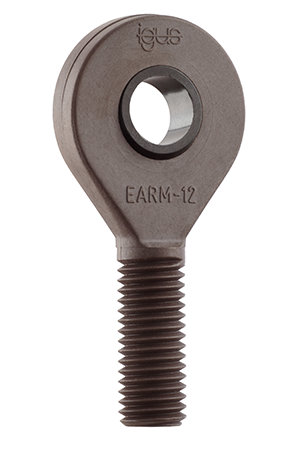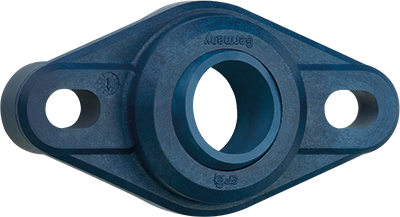Which igubal® housing material is most suitable for my application?
Peter Hughes | 26. October 2020
As with all igus® products, the igubal® spherical bearings come in a wide range of materials. Each material is designed to suit specific requirements, whether you require a rod end for high-temperature environments or a flange bearing for food contact.
Here we will provide you with an overview of the materials available, and their uses.
igumid G: the gold standard
Our standard housing is made from igumid G. This is a particularly robust, shock-resistant housing made from long-fibre reinforced polymer. This housing is not designed for extreme temperatures, but is ideal for temperatures between -30°C and +80°C.
This housing can be combined with any of our spherical ball materials.
iguton G: for when the heat is on
The iguton G housing is designed specifically for extreme temperatures ranging from -40°C to -200°C. Short-term application temperatures of up to +240°C are also possible with this housing. In addition to extreme temperatures, this housing also provides a high level of chemical resistance.
To enjoy the greatest success, this housing should be used in combination with the iglidur X high-temperature spherical ball.

Detectable and FDA-conform housing
Should your application require FDA or EU 10/2011 conformity for contact with food, our new igubal FC housing fulfills both requirements. In addition, this housing can also be used at application temperatures of up to +100°C. igubal FC parts are currently available as a rod end, clevis joint, or a 2-hole flange bearing.

These igubal FC materials are also detectable. This material can be verified as a foreign particle with all common parameters used in detection technology and thus ensures the safety of your application.
Do you want to know more about igubal and the materials used? Please feel free to contact us.

